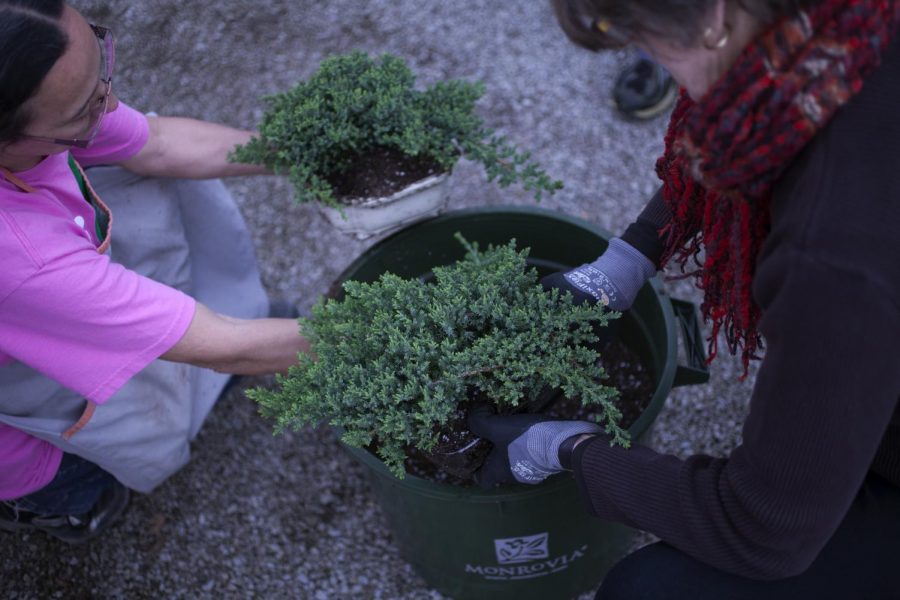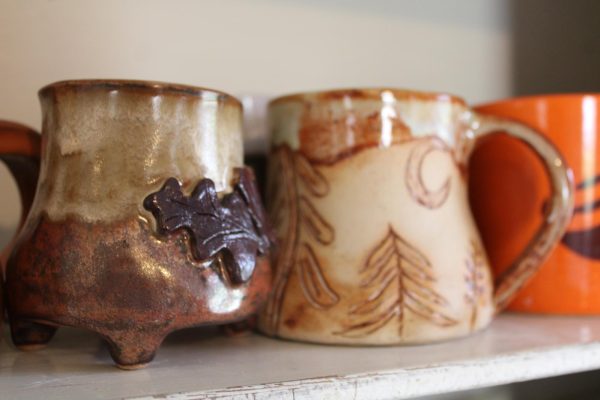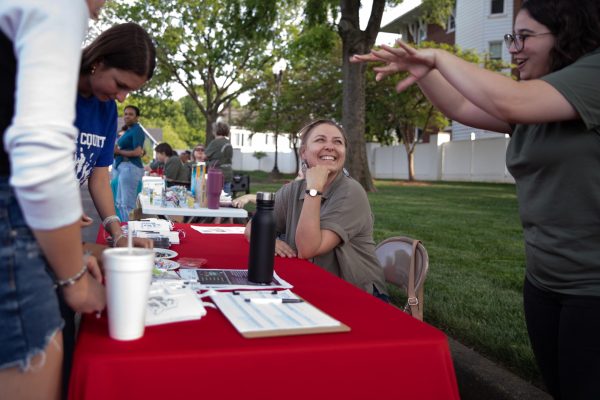Community members learn about Japanese art form
March 22, 2016
Bonsai Blowout
T
he Three Lions Garden Center hosted its first Bonsai class on Saturday, welcoming Bowling Green community members into its greenhouse for an afternoon of learning the Japanese art form.
The class was taught by James Szadek, a regional sales representative for Monrovia, which is a wholesale grower and gardening supply company. Szadek said he’s been doing Bonsai art since he was 12.
“My brothers and I bought my dad a Bonsai, but he was killing it,” Szadek said. “I took over and started taking care of it, and that was the beginning.”
Szadek began the class by sharing a short history of Bonsai art, which originated in China and was perfected in Japan. A tree does not become Bonsai until it is combined with a pot, where it will then live and grow.
Szadek also spent time explaining how to care for the plant and said the key was to keep it from drying out without overwatering it.
Throughout the class, Szadek helped each student through the process of removing the plant from its original pot, rubbing soil away from the roots, clipping the roots and using a wire to secure the plant in its new container.
“It’s like if you were getting surgery and they cut your vein,” Szadek explained as he demonstrated how to clip the roots. Szadek said a student from another class clipped the roots too short, preventing the plant’s survival.
Szadek said the purpose of the wire is to make the tree think it is in the ground and to help it grow in its new container.
When students had successfully repotted their plants, Szadek began explaining how to cut the tree. He displayed a tree he made last month and compared its shape to that of a tree in the Serengeti.
He explained other common Bonsai shapes, including the “windswept” or “cascading” look. However, he encouraged students to go with their own visions and cut where they thought they should.
“Less is more, like when you get a haircut,” Szadek told the class.
Mahkala Burden, Morgantown junior, said she heard about the Bonsai class through a friend. Burden said she picked Japan as her target country for an intercultural communication class assignment and thought the Bonsai class was a good opportunity to learn more about Japanese culture.
“It was really interesting,” Burden said. “I didn’t realize how much time it takes or know about the whole maintenance aspect of keeping a Bonsai tree.”
Bonsai trees need to be checked and repotted annually, Szadek explained. This allows the tree to get the nutrients and space it needs to grow and flourish.
“I’ll try to maintain it for as long as I can, I think, but we’ll see how it goes,” Burden said. “I’m better with cacti, which are very low maintenance, but I’m going to try my best to not let it die.”
John Atkerson, owner of Three Lions Garden Center, said he hopes to offer other classes, including a Hypertufa class, to the community throughout the year. A Hypertufa pot is created by mixing concrete and peat moss, and it is supposed to stimulate plant growth.
Although Atkerson opened the garden center in fall 2014, he said he had been thinking about it since 1990. Before opening the business, Atkerson said he was just a hobby gardener.
“I grew up with a family that always had gardens and plants,” Atkerson said.
Szadek, Monrovia’s sales rep for the southeastern region, travels around to work with different customers. Szadek said he offers to teach the Bonsai class to special clients like Atkerson whose nurseries have outreach and education programs.
Theresa Maris, an employee at the garden center, said it would be nice if the center was able to have a Bonsai area in the greenhouse and offer the class at least once per year.
“Not only was he talking about Bonsai, but he gave a lot of good tips about gardening and caring for plants,” Maris said.
Some people accuse Bonsai artists of manipulating plants and forcing them to grow against their nature, Szadek said.
“It should accentuate a plant, not break it of its natural habit,” Szadek said. “The goal is to bring nature closer, not to make some weird, funky-looking plant.”

























